
After you’ve passed your driving test, you might think the road ahead is going to be nothing but breezy. However, the reality of being on the road is sometimes more costly than anticipated, especially with the price of fuel fluctuating significantly—though it seems to mostly climb.
If the expense of fuel is a constant worry for you, there’s good news. There are several smart strategies to cut down on fuel consumption and ensure you’re getting the most value out of every litre.
For those eager to learn how to minimise fuel usage and stretch their pound further, our list of the top 10 ways to save fuel while driving offers exactly what you need.
1. Know How to Cool Down
In the UK, while we may not experience hot weather as frequently as we’d like, there are days when the temperature soars.
Unfortunately, we’re not always able to spend these rare scorcher days in the comfort of a local beer garden or our backyards.
Driving in hot weather can transform from a pleasure to a challenge, as the combination of heat, leather seats, and the confined space of a car can lead to an uncomfortable and sweaty experience.
The straightforward solution to combat this discomfort is to either open a window or turn on the air conditioning (A/C). However, for those mindful of fuel efficiency while driving, choosing the right method is crucial.
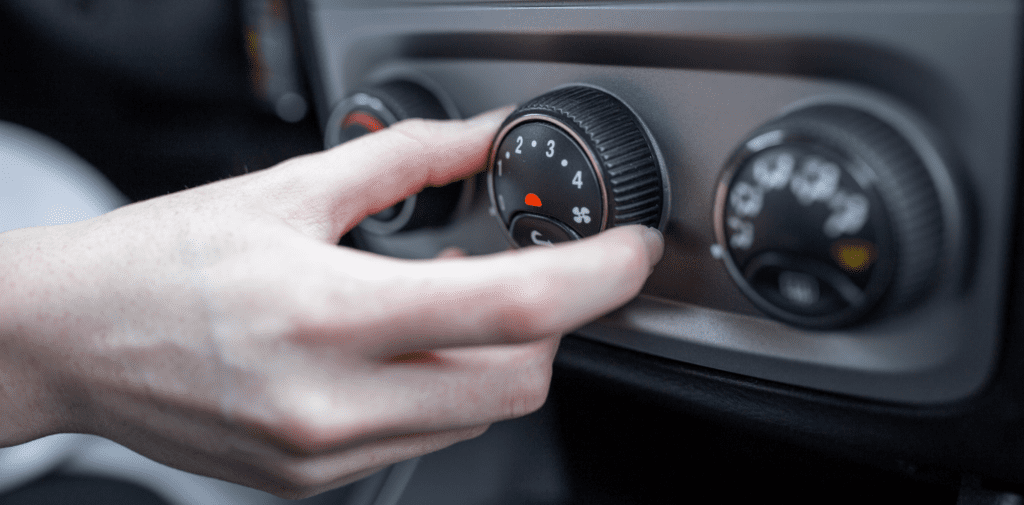
High-Speed Driving: Use A/C
If you enjoy the sensation of wind in your hair by rolling down the windows, it might be time to reconsider, especially when driving at high speeds.
Although the breeze is refreshing, it can cause an increase in fuel consumption due to higher wind resistance. This resistance forces your vehicle to use more fuel to maintain speed.
Therefore, when you’re driving at speeds of 30 mph or faster, opting for the A/C is more fuel-efficient, despite it not providing the natural wind sensation.
Low-Speed Driving: Roll Down the Windows
Conversely, at lower speeds, rolling down the windows is a far better choice than using the A/C. It’s a more fuel-efficient way to keep cool without the need for artificial cooling.
If the heat is making driving a struggle, consider exploring our tips on the dos and don’ts for driving in hot weather to improve your driving experience during these warmer periods.
2. Sort Out Your Bad Habits
Your driving style significantly impacts your car’s fuel consumption. If you find yourself pressing the pedals too hard, it’s time to adopt a gentler approach.
Abrupt braking or accelerating too quickly not only increases your fuel consumption unnecessarily but also wears down your vehicle faster.
Similarly, those with a penchant for speeding will notice that their attempts to overtake often lead to higher fuel use, especially when they end up stopping at a red light shortly after.
Maintaining a constant speed is key to reducing fuel consumption. Moreover, enhancing your hazard perception skills allows you to anticipate changes on the road better, enabling a smoother adjustment of speed without abrupt changes.
Listen to Your Engine
Paying attention to your engine’s sounds can also guide you in optimising fuel efficiency. A common mistake is waiting too long to shift up a gear or shifting up too prematurely, both of which can lead to increased fuel consumption. Finding the right balance in gear changing is crucial for maintaining an efficient drive.
Consider Telematics Insurance
For those struggling to break free from these inefficient habits, considering black box (telematics) insurance might be the motivation you need.
This type of insurance monitors your driving patterns, including how softly or aggressively you brake and accelerate.
Based on your driving behaviour, you can either be rewarded with lower insurance premiums for good driving or face higher premiums as a nudge to improve your habits.
If you’re looking for an incentive to cultivate better driving practices, telematics insurance could be the perfect solution.
3. Cut Down on Unnecessary Weight
Reducing the weight of your car is a straightforward yet effective way to decrease fuel consumption. While it’s crucial to carry essential items in your vehicle, distinguishing between what’s necessary and what’s not can make a significant difference in how much fuel your car uses. A lighter car requires less energy to move, translating into fuel savings.
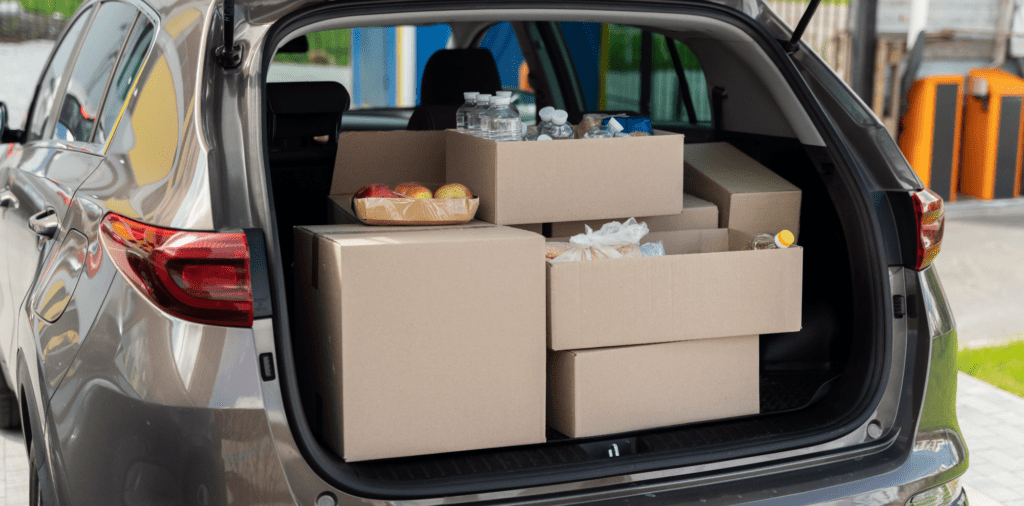
Declutter Your Car
Begin by eliminating rubbish that has accumulated over time. Unnecessary items like old takeaway coffee cups or chocolate wrappers do nothing but add weight.
Next, inspect your boot and glove box for items that you don’t use regularly and remove them. This simple act of decluttering can contribute to making your vehicle more fuel-efficient.
Remove Unused Accessories
If you have a roof box that you’re not using, consider removing it. Though it might require some effort, removing a roof box can significantly reduce wind resistance.
Much like open windows, a roof box increases drag, forcing your vehicle to consume more fuel to maintain speed.
Manage Your Fuel Load
Interestingly, the weight of the fuel itself can also affect your car’s efficiency. Instead of filling your tank to the brim every time, consider topping up only when necessary.
Carrying only as much fuel as you need can help reduce the overall weight of your car, making it slightly more efficient in terms of fuel consumption.
4. Check Your Tyres
For all vehicle owners, regular maintenance is essential not just for avoiding breakdowns but also for ensuring road safety.
Among the various aspects of vehicle maintenance, tyres are critical. Driving on underinflated tyres not only increases fuel consumption but also poses significant safety risks.
In the UK, a considerable amount of fuel is wasted, and safety is compromised due to underinflated tyres.
A study by Michelin highlighted that UK drivers are squandering £246 million annually on extra fuel costs and endangering lives by driving with tyres that are not adequately inflated.

The Risks of Underinflated Tyres
Tyres that are between 7 and 14psi below the recommended pressure are considered dangerously underinflated.
This condition can lead to a decrease in fuel efficiency by approximately one mile per gallon and significantly increase the likelihood of road accidents.
The danger arises because underinflated tyres impair your ability to brake and steer effectively, posing a threat to both the driver and others on the road.
Regular Tyre Inspections
It’s vital to regularly check your tyres to ensure they are at the correct pressure as indicated in your car’s manual.
We recommend inspecting your tyres every two weeks to maintain optimal tyre pressure and performance.
Keeping your tyres properly inflated not only enhances fuel efficiency but also ensures your vehicle is safer to drive.
5. Plan Your Journeys
One of the simplest strategies to conserve fuel is by meticulously planning your journeys. Whether it’s running errands or embarking on longer drives, a little planning can go a long way in enhancing fuel efficiency.
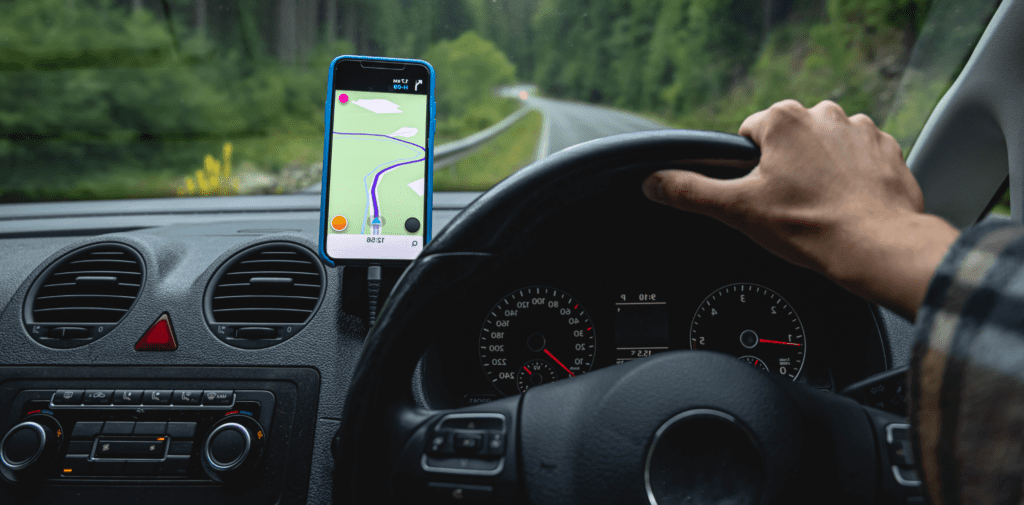
Combine Your Errands
For those who spread their errands throughout the week, consider consolidating these trips into a single journey.
By combining your errands, you reduce the need to drive back and forth multiple times, which in turn saves fuel. This approach not only makes your trips more fuel-efficient but also more time-efficient.
For longer trips, take advantage of your sat nav to identify the shortest or least congested routes.
Sometimes, a shorter route can significantly reduce your travel time and fuel consumption, while less congested routes can help avoid stop-start driving, which is notorious for increasing fuel use.
Try It When Possible
While it might not always be feasible to combine all your errands due to time constraints, attempting to do so occasionally can lead to considerable savings.
Even if you can’t make every trip more efficient, the occasional consolidated journey can still contribute to reducing fuel consumption and saving money.
6. Switch Off for a While
Turning off your engine during prolonged stops can be a straightforward yet effective method to save fuel and reduce emissions.

Avoid Idling in Traffic
When caught in a long queue of traffic, it might seem convenient to keep the engine running, ready to move at a moment’s notice.
However, idling for extended periods is not only wasteful in terms of fuel consumption but also contributes unnecessarily to carbon dioxide emissions.
Turn Off the Engine
If you find yourself at a complete standstill, it’s advisable to switch off the engine. This action conserves fuel and is better for the environment.
The common concern that restarting the engine frequently could wear it out or use more fuel is less significant with modern vehicles, as they are designed to handle such operations efficiently.
Restart When Necessary
Once traffic begins to move, simply restart your engine and continue on your journey. This practice, known as ‘stop-start’ driving, has become increasingly common with the introduction of automatic stop-start systems in many new cars, which automatically shut down and restart the engine to save fuel during brief stops.
7. Budget
Navigating your finances with a budget is a crucial aspect of car ownership, impacting everything from fuel purchases to regular maintenance.
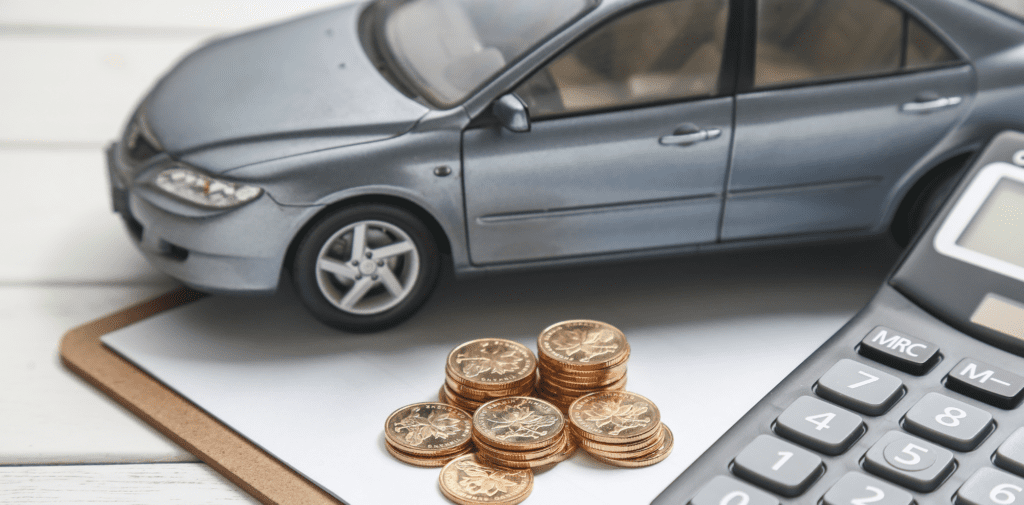
Embrace Budgeting
Despite the common reluctance towards budgeting, it’s an essential practice for every car owner. The costs associated with owning a vehicle, such as insurance, road tax, and fuel, can add up quickly, making budgeting not just beneficial but necessary.
Track Your Spending
Establish a budget that accounts for all car-related expenses and keep a close eye on your monthly outgoings. This oversight allows you to identify areas where you might be overspending.
For instance, if you find yourself consistently choosing a petrol station with notably higher fuel prices, it’s a clear signal that a change in habits could lead to savings.
Check where the cheapest fuel station is to you here
Make Informed Choices
By monitoring where and how you spend your money, you can make more informed decisions that will help stretch your budget further.
Switching to a more cost-effective fuel station or adjusting your driving habits to improve fuel efficiency are just a couple of ways to manage your expenses more effectively.
8. Sharing is Caring
Exploring car-sharing options can be a game-changer for those looking to cut down on their travel expenses and reduce their environmental footprint.

Consider Car Sharing
If you find that your car is often parked or you and a friend or family member are frequently travelling the same route, car sharing could be a wise decision.
This approach is not only environmentally friendly but can also significantly lower your fuel costs.
Whether alternating car use on different days or commuting together, the financial benefits become quickly evident.
Manage Fuel Costs
When sharing a car, it’s crucial to establish a clear agreement on handling fuel expenses to avoid any misunderstandings.
A straightforward method is to alternate who pays for fuel, keeping a precise record of expenditures. This transparency ensures fairness and avoids potential conflicts over financial contributions.
Insurance Matters
Ensuring that both drivers are adequately insured is another critical aspect of car sharing. Regardless of whether one driver already has insurance, the second driver must also be covered for the vehicle.
Overlooking the importance of proper insurance cover can lead to severe consequences, including fines, penalty points, or even disqualification from driving.
Prioritising this legal requirement safeguards both drivers and ensures peace of mind during shared journeys.
9. Go Eco-Friendly
Embracing eco-friendly vehicles is an effective strategy for those aiming to reduce fuel consumption and support environmental sustainability.
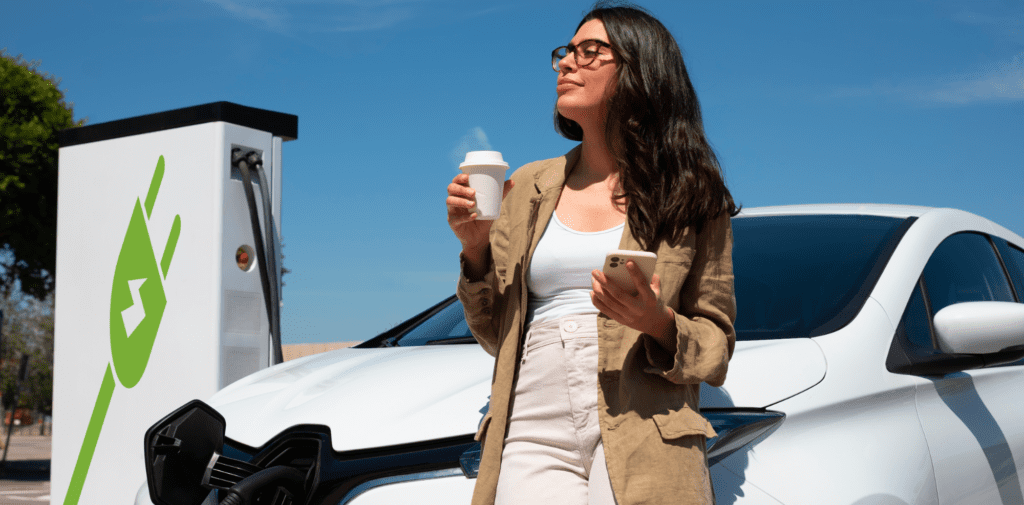
Consider Eco-Friendly Vehicles
Switching to an eco-friendly car presents a promising opportunity to decrease your environmental impact and achieve long-term savings.
Whether you opt for a fully electric vehicle, eliminating the need for petrol or diesel, or choose a hybrid model to significantly reduce your fuel use, the benefits extend both to the planet and your finances.
It’s important to note, however, that eco-friendly vehicles often come with a higher initial purchase price.
Financial Incentives
The initial cost of eco-friendly cars can be daunting, but there is good news. The government offers grants for purchasing certain eco-friendly vehicles, making them more accessible.
These incentives are designed to encourage the adoption of greener transport options, helping to offset the upfront expense and making the transition to eco-friendly driving more appealing for consumers.
10. Stop Driving
Taking a break from driving can be a radical but effective measure to significantly reduce fuel expenses and contribute positively to environmental conservation.

Embrace Alternative Modes of Transport
Consider alternatives to using your car for short distances or routine errands. Walking, cycling, or utilising public transport can be practical and healthier options for getting around.
For instance, a quick trip to the local shop could be an opportunity for a brisk walk rather than a drive, saving money and reducing carbon emissions.
By reserving car use for essential long journeys or specific commitments, the potential for savings on fuel and general car expenses increases substantially.
Consider a Long-term Break
If after implementing various strategies to save on fuel costs you still find the financial burden of car ownership too heavy, it might be time to ponder a longer hiatus from driving.
For those reluctant to sell their vehicles, applying for a Statutory Off Road Notification (SORN) offers a solution.
This action legally exempts your car from being taxed and insured, provided it is stored on private property and not used on public roads.
Though this means you cannot drive the car during the SORN period, it can offer significant financial relief from tax, insurance, and maintenance costs.
Remember, once the SORN is lifted, all legal obligations and financial commitments related to car ownership will resume.
Frequently asked questions
- Maintain a steady speed by using cruise control on motorways
- Avoid rapid acceleration
- Brake gently
Yes, driving at 50-60 mph is generally the most fuel-efficient speed for most cars.
Under-inflated tyres increase rolling resistance, making your car use more fuel.
Check your tyre pressure regularly and keep them inflated to the recommended levels.
Using the recommended fuel type for your vehicle ensures optimal engine performance and fuel efficiency.
Premium fuels may offer slight improvements, but the cost-benefit ratio varies.
Yes, regular servicing keeps your engine running efficiently.
- Clean air filters
- Properly functioning spark plugs
- Timely oil changes all contribute to better fuel economy
- At higher speeds, it’s more efficient to use air conditioning.
- At lower speeds, opening windows is more economical.
- Carrying unnecessary weight in your vehicle increases fuel consumption.
- Remove any unneeded items from your boot or backseat.
Yes, smooth driving with gradual acceleration and gentle braking saves fuel compared to aggressive driving.
Yes, turning off the engine when parked or waiting for more than a minute saves fuel and reduces emissions.
In cities, avoid rush hours when possible, plan your routes to minimise stops, and use public transport or carpooling when feasible.
Driving in the highest gear possible without straining the engine lowers fuel consumption. Shift up early to keep revs low.
In winter, allow your car to warm up by driving gently rather than idling. Keep your car in a garage to reduce warm-up time.
Yes, using a sat-nav to:
- Find the most efficient route
- Avoiding traffic
- Monitoring fuel consumption can all help save fuel.
Cruise control helps maintain a constant speed and can improve fuel efficiency on long, flat journeys.
Removing roof racks or boxes when not in use reduces drag and improves fuel economy. Keeping windows closed at higher speeds also helps.


